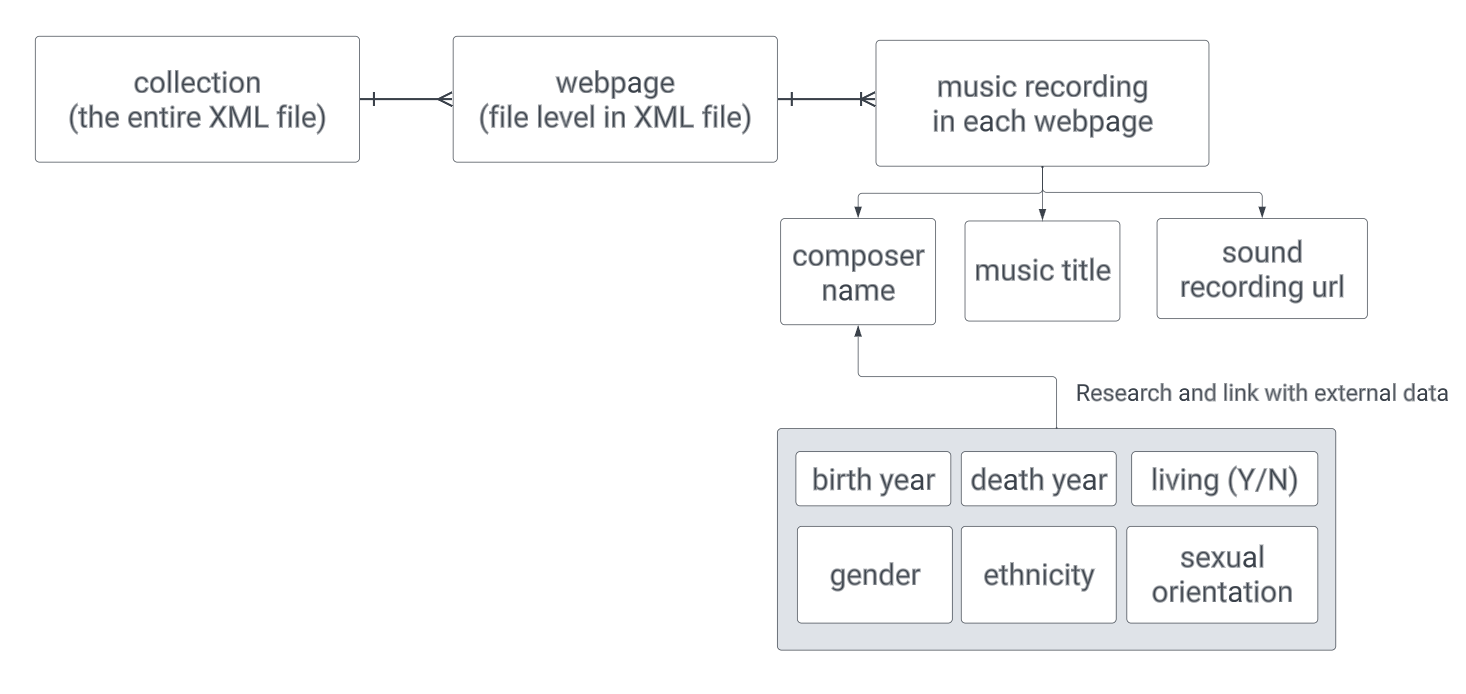1.
Introduction
McGill University’s Schulich School of Music (SSoM) is one of the major music-teaching institutions in Canada. Large ensemble playing forms an important part of the student experience (McGill University 2023). Committed to equity, diversity and inclusion (EDI), the SSoM encourages works to enhance the diversity of curriculum, repertoire and teaching modalities as stated in its Diversity Action Plan (Ravencroft 2020). Thus, following the launch of the SSoM Performance Archive (SSoMPA) in 2023, the authors decided to analyze the open performance data and evaluate the diversification endeavor in SSoM’s concert programming by comparing its performance history between 2008 and 2022 with the general EDI discussions in Canadian news. It is hoped that a glimpse into SSoM’s EDI efforts could provide an indicative direction as it continues its commitment in EDI. The methodologies used could also demonstrate how digital humanities and data mining could help institutions evaluate their EDI success in designing curricula.
2.
Literature Review
Throughout history, it is common knowledge that classical music has struggled with diversity, equity, inclusion, access, and belonging issues (Purdon 2023), and that classical music has been dominated by dead white men such as Mozart, Beethoven and Brahms. Marcho (2020) further reveals that music educators tend to favor well-known male composers over female composers. Nonetheless, considerations such as the transmission of values and development of identity across all music cultures could set a good foundation for a culturally responsive pedagogy (Cumberledge / Williams 2023), and this makes the principles of EDI essential to curriculum design.
Despite their importance, a literature review yielded few research that employed EDI principles and music data. Two that could be of some relevance are the studies by Park et al. (2022) and Georges and Seckin (2022). In the former, the authors used datasets of CD recordings and explored the composer-to-composer networks in order to see how they affected the chances of the composers being featured in the same CD. In the latter, Georges and Seckin (2022) map-tracked composers’ interconnections based on composer-to-composer influences and composers’ similarities based on musical influences and ecological data to encourage active discovery of composers and their music. Yet, no other research so far has examined concert programming diversity efforts. Hence, seeing the gap, the authors use the newly available open data to analyze SSoM’s performance trends from an EDI perspective.
3.
Methodologies
First, to understand how the topic of EDI evolved in Canada, data mining was conducted in all Canadian historical and current news sources on ProQuest using TDM Studio. The keyword and phrase searches used included “diversity equity and inclusion” and variations of these terms and their acronyms in different orders and combinations. Document types were specified to substantial pieces such as news, commentary, article, feature, correspondence, letter to the editor, editorial and front page/cover story. A longitudinal view showed that there was an increase of EDI discussion in 1997-1999, and it grew exponentially starting 2018. This observation was then compared against SSoM’s concert programming trend, exploring the correlation between EDI discussion and the diversity of repertoire.
Then, the authors created Python scripts to automate the process of extracting key metadata elements from the EAD XML file in the SSoMPA. Regular expressions and iterative loops were used for pattern matching and locating specific elements including year, conductors, title of works, composers. External open sources such as the BIPOC Canadian Composers dataset (Doi / Hilts 2023) and the Composer Database by the Institute for Composer Diversity (n.d.) were brought in to identify underrepresented composers and their works. Figure 1 shows the data structure with the elements and sources involved.
Figure 1. Data structure for extraction and additional metadata enrichment
4.
Visualization and Open Data Sharing
To aid easy understanding of complex data, visualization tools like Plotly were used to create interactive charts to illustrate composer diversity by gender, sexual orientation and geographical location. Findings and datasets are shared at GitHub for researchers to access, reuse, and export in an organized manner. By providing open data, the authors hope to facilitate collaborations and further research in cultural and EDI studies through digital humanities.
5.
Conclusion
This research examined SSoM’s performance history and revealed the outcomes of its application of EDI principles in concert programming. It sheds light on the level of inclusion of underrepresented composers and the level of repertoire diversity in SSoM’s performances in the past decades. The evidence-based insights yielded could also help SSoM promote and foster an equitable, diverse and inclusive music learning environment within the University and beyond.
